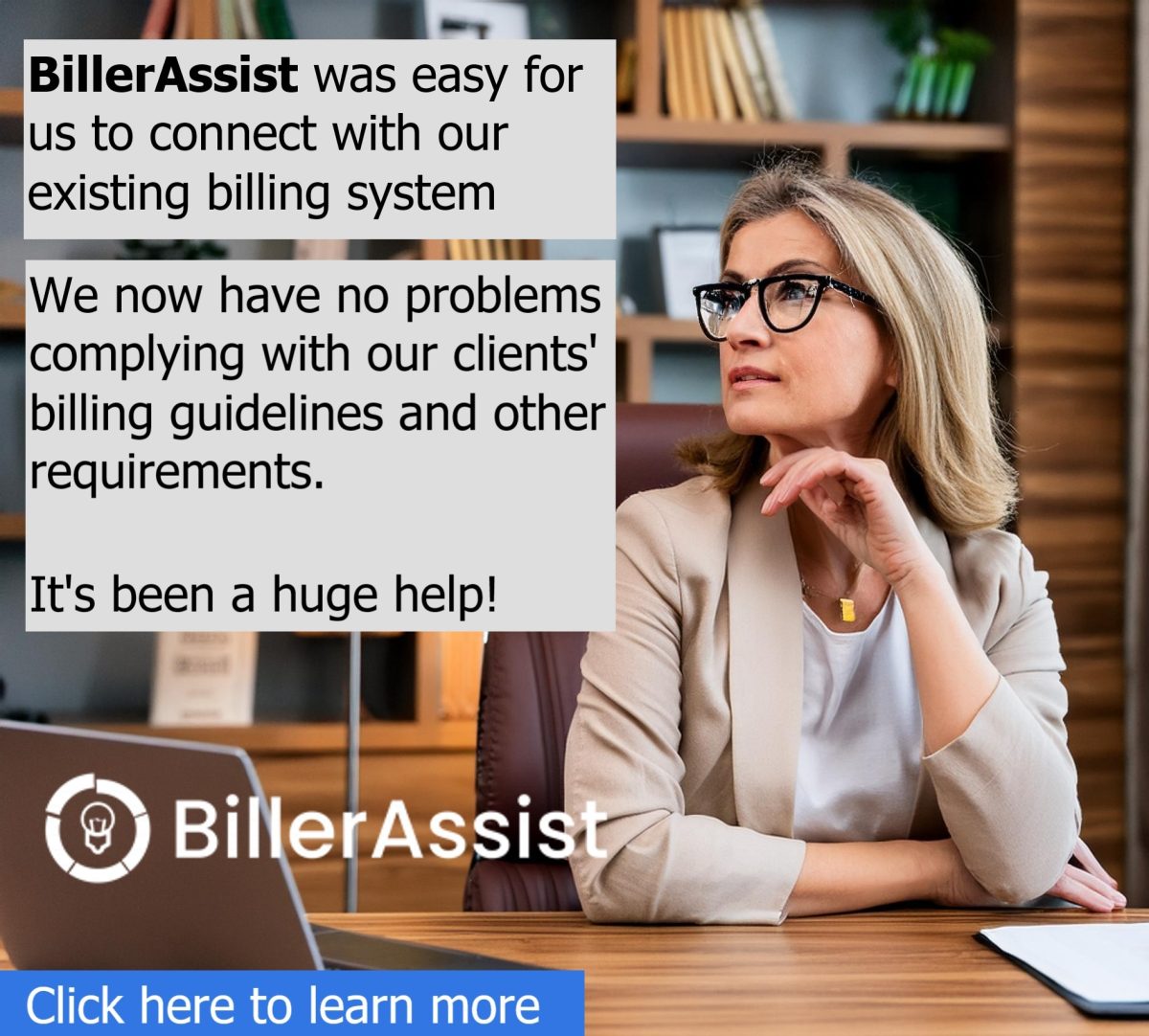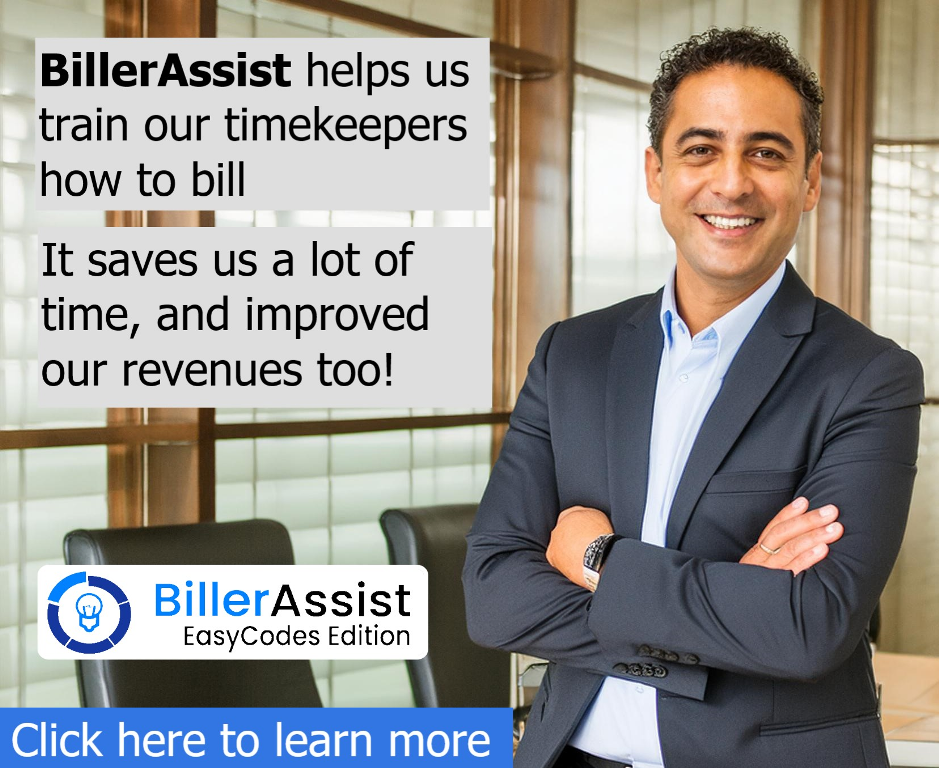How to Improve Billing Using Your Own Billing Data
Several recent surveys have revealed that the scrutiny faced by legal billing has reached new heights. Clients are demanding more transparency in their representation, especially in terms of billing.
One survey in particular showed that almost 80% of law firms had significant numbers of invoices rejected due to failures to comply with client billing requirements.
Although this trend happens to coincide with a trend of more cost-conscious clients, new technology has enabled clients to take a more critical eye toward their legal invoices.
Firms that want to remain successful — not to mention ethically compliant — must find ways to adapt.
As such, it is not surprising that another recent survey revealed that 48% or more of law firm partners regard billing review – the process of analyzing pre-bills before invoices are submitted to clients for payment – as a major pain point in their firm.
Many lawyers simply accept this process as a kind of “No pain, no gain” necessity. But what if billing review could be “No pain, all gain”?
Standardization in Billing
The legal field is no stranger to stories of inflated billing. Most lawyers are familiar with jokes about the mythical “Dewey Cheatem & Howe” law firm, and there is even a book about overbilling by attorneys.
For example, a former high-profile lawyer managed able to swindle almost $400,000 via unethical billing practices before being caught and convicted. Another infamous example comes from a lawyer who claimed to bill around 5,941 hours a year.
For context, if there were any way this number was true, it would require this attorney to bill about 16 hours all 365 days of the year. This is a titanic assertion in and of itself, however, taken with the fact that an attorney can typically only bill for about 70% of the total time they spend working, it becomes obviously problematic. That is, unless this attorney found a way to work in his sleep.
Especially for law firms that serve corporate or institutional clients, it is unlikely to find this level of unreasonable billing today.
This is due in part to the adoption of the Uniform Task-Based Management System (UTBMS) and the Legal Electronic Data Exchange Standard (LEDES). UTBMS and LEDES were introduced over 20 years ago. Since that time, technology has made some major strides.
These systems were created to provide clients with a greater level of transparency, while also steering law firms towards heightened standardization. The more standardized the process, the easier it becomes to compare billing from one firm to the next. The easier legal bills are to compare, the more glaring discrepancies become.
UTBMS accomplish this by creating categories for specifically coded legal tasks and expenses. This organization makes it easier for both the firm and the client to track a specific fee to a specific task or expense. The organized structure has the additional effect of allowing for easier data analysis based on outcomes and time and resource allocation.
For its part, LEDES serves as an electronic invoicing format that includes the UTBMS codes. Standardized invoices are what make bills easier to review. They also allow for electronic billing, which despite its flaws can actually speed up the bills submission process, and thereby at least theoretically also speed up payment.
Using available technology in concert with UTBMS and LEDES allows clients to “capture meaningful billing information and data in an easier, more digestible way.”
Programs designed for pattern recognition can easily assess and organize the UTBMS codes provided in LEDES invoices, making it easier for clients to compare legal billing in ways that would have been exponentially more time consuming and daunting in the past.
In addition, corporate and institutional clients have been increasingly using “outside counsel guidelines” to specify requirements and limitations for the attorney engagement, especially as to billing practices. Failures to meet these client requirements result in invoice rejections or reductions.
This problem of invoice rejections and reductions is now commonplace. As previously noted, in a recent survey, almost 80% of law firms had significant numbers of invoices reduced or rejected due to failures to comply with client billing requirements.
More specifically, the survey revealed that roughly “43% of law firms see between 5% and 10% of their invoices rejected due to compliance issues”, but “almost 36% of firms see 20% or more of their invoices rejected or reduced due to compliance problems.”
With these rates of invoice errors, firms must devote more resources to reviewing bills for compliance before submitting them for payment. And this heightened need for compliance results in increased delays and costs.
In fact, as previously noted, in another recent survey, 48% or more of law firms said that the process of cleaning up pre-bills before invoices are submitted to clients for payment is a major pain point in their firm.
Not only are clients more aware of practices like block billing, exaggerated hours on tasks, nebulous service descriptions, and other such practices, but clients are also on the lookout for them.
Moreover, they are not afraid to call out such practices when they see them, most often resulting in a refusal to pay. Transparency has removed the hiding places of such tactics and laid them bare.
Client and Court Demands
Clients can’t be blamed for not wanting to pay unreasonable fees. In fact, especially after the 2008 economic downturn, hourly rates have become increasingly more client-dictated.
There’s even the ever-present talk that billable hours may be on the way out entirely. We are likely still a long way from that coming to fruition, but even now alternative billing arrangements are becoming more prevalent.
Because of standardization and the ease of comparative cost analysis, the proper allocation of hourly billing remains a client’s most prudent option in terms of precision cost-control.
Clients aren’t alone in welcoming this push towards greater efficiency. Greater billing efficiency have been shown to have the full support of the courts as well. Court scrutiny of fee petitions, whether by the “lodestar” method or otherwise, long been a way for judges to place limits on attorney profit seeking.
In addition, lawyers have been penalized for not making use of available technology that could have significantly reduced the cost of their legal services. For example using much older technology, legal research applications can find relevant case law in a fraction of the time it takes a person.
Not making use of such technology, and instead using the old paper research methods, would not be tolerated by even the most naïve of clients.
Just like the rise of electronic research systems more than 30 years ago, other technologies are also coming into common use.
In the words of a prominent law firm partner, “What we are seeing from the bench, at least, is that the courts are mindful of the use of [automation] technology and are grappling with what it means for the litigation process.”
Pathways for Law Firms
The benefits of UTBMS coding and LEDES formatting are numerous both for clients and attorneys alike. They keep both sides honest, and allow billing disputes to be more easily resolved.
Most law firm billing applications support UTBMS coding and LEDES formatted invoicing. For smaller firms, Clio, Rocket Matter, PracticePanther, Actionstep, and Timeslips are just a few of the most popular examples.
Nevertheless, the process of applying the codes to each and every billing entry can be time-consuming and frustrating. Moreover, the process of bringing billing data into compliance with UTBMS standards can be an extensive undertaking. What’s worse, performing the coding manually creates additional opportunities for human error.
In their earliest forms, the interfaces for UTBMS codes were clunky and relied upon cumbersome dropdown boxes to select the right code for each specific task and expense. Fortunately, there are now better ways to implement it.
Automation is helping law firms comply with UTMBS standards in a more efficient manner.
In fact, several new automated or “AI-assisted billing” applications can use their own billing system to automatically apply all task and expense codes.
Automatically applying billing codes results in standardized law firm’s billing data and eliminates human error. This allows law firms to use their own billing information to help decide where their time is best spent to improve operations and profits.
In addition, software companies are also helping lawyers meet the demands of “outside counsel guidelines”.
A recent survey showed decreases in law firm realization and collection rates as high as 15%.
However, with several new “AI-assisted billing” applications, law firms can use their own billing data to provide all their timekeepers with real-time alerts for outside counsel guideline compliance, and even notify users when their charges are not likely to be paid.
Moreover, with respect to billing review in particular, most current billing systems require manual review of pre-bills or examination of the entries themselves.
Almost half of all attorneys responding to a recent survey indicated a desire for a technological solution.
Thankfully, with the new “AI-assisted billing” applications, law firms can now significantly reduce the time spent cleaning up pre-bills for submission to clients as actual invoices.
Technology has reached a point where analysis of billing data can be routinely and inexpensively. Automatically standardized billing information is right there for the taking.
For example, with standardized billing data, firms can easily optimize the correlations between time allocation and outcomes of specific matters, and steer themselves in the most desirable direction.
In the past, it would take entire teams to recreate the insights that can be compiled by one legal tech app. What’s most impressive is that this is just a by-product of the actual intended purpose of the applications.
Automated billing in compliance with UTBMS standards and formatted into LEDES invoices itself saves both the firm and the client time and confusion.
This supplementary technology could put smaller firms on more equal footing with larger firms. At the same time, it could help larger firms become leaner or reallocate those resources towards more profitable uses of their time.
Conclusion
Monitoring billing and collections data is nothing new. But, if the data is simply monitored instead of efficiently analyzed, the firm could be missing out on valuable information that affects both their short-term profitability and long-term viability.
Moreover, if a firm is using outdated billing processes that do not standardize the billing data, the information gleaned won’t be as helpful.
Standardization and transparency are here to stay. Finding the most efficient way to incorporate them into your billing practices is the only way to stay viable. Technology in the form of automation and machine learning provide that efficiency.







